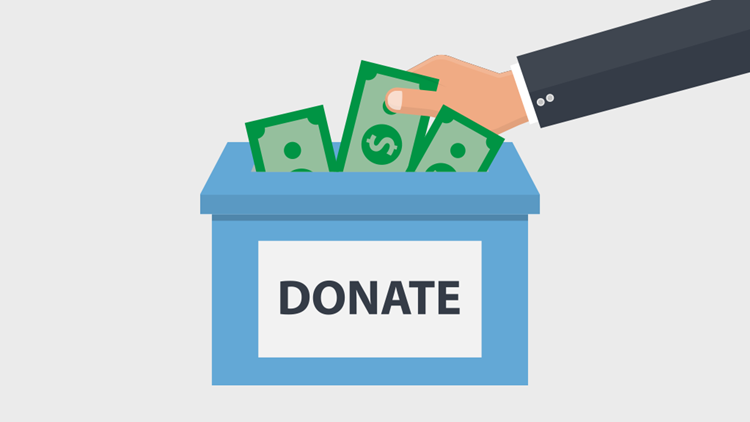by Socheata Ten EA, LLC | Sep 25, 2021 | Tax Tips and News
The American job market is a changing landscape these days. A year ago, the big push was to retain workers in the midst of the COVID-19 pandemic. Now the need is to find new workers to staff a growing economy.
To help do just that, the Internal Revenue Service points to the work opportunity tax credit, which was extended by recent legislation all the way through the end of 2025.
This tax credit isn’t new. It encourages employers to hire from any of 10 targeted groups who historically face big hurdles in finding jobs. These targeted groups are:
- Temporary Assistance for Needy Families recipients
- Qualified unemployed veterans, including disabled veterans
- Formerly incarcerated individuals
- Designated community residents living in Empowerment Zones or Rural Renewal Counties
- Vocational rehabilitation referrals
- Summer youth employees living in Empowerment Zones
- Supplemental Nutrition Assistance Program recipients
- Supplemental Security Income recipients
- Long-term family assistance recipients
- Long-term unemployment recipients
The IRS says it shouldn’t be a surprise that long-term unemployment recipients are on the list, since millions of people were out of work at one time or another over the span of the pandemic.
How does an employer qualify for the credit?
An employer seeking to qualify for the work opportunity tax credit has to first request the certification from their state. They should submit IRS Form 8850, Pre-Screening Notice and Certification Request for the Work Opportunity Credit to their state workforce or employment agency. Do not submit this form to the IRS.
Employers usually have 28 days to submit Form 8850 to their state agency after the eligible new hire starts work. If the hire falls into one of two special categories, though, there’s an extension at play.
If the new employee is either a qualified summer youth employee living in an Empowerment Zone; or a designated community resident living in an Empowerment Zone, then the employer has until Nov. 8, 2021 to submit Form 8850 to the state. The new hires have to start work between January 1 and October 9 in order to qualify for the extended deadline.
See Notice 2021-43 and the instructions for Form 8850 for other requirements and details.
How does an employer claim the work opportunity credit?
The work opportunity credit is claimed by the eligible employer when they file their federal income tax return.
The credit is calculated on Form 5884, Work Opportunity Credit, based generally on the wages paid to their eligible workers in their first year on the job.
Once calculated, the credit amount is claimed on Form 3800, General Business Credit.
It should be noted that tax-exempt organizations can only claim the work opportunity credit for hiring qualified veterans. These tax-exempt employers can use Form 5884-C, Work Opportunity Credit for Qualified Tax Exempt Organizations, to claim the credit against payroll taxes. However, for these employers, the credit is limited to the amount of the business income tax liability or Social Security tax owed for tax-exempt organizations.
Source: Renewed work opportunity tax credit can help employers hire workers
– Story provided by TaxingSubjects.com
by Socheata Ten EA, LLC | Sep 23, 2021 | Tax Tips and News
Recent changes in the tax regulations to help ease the burdens of the pandemic could lead to lower tax bills at filing time for some Americans. The new benefits allow taxpayers who do not itemize to take advantage of donations to charity—at least for a while.
The change was part of last December’s Taxpayer Certainty and Disaster Tax Relief Act of 2020, which allowed deductions for charitable gifts using a number of methods.
Non-itemizers can cash in, for now
The new law extends four relief measures originally set out by other coronavirus relief legislation through the end of 2022.
Historically, taxpayers had to itemize their deductions in order to claim charitable contributions. The new law, however, means taxpayers who don’t qualify for itemizing can claim a deduction for cash contributions on their 2021 return.
The IRS estimates that nine in 10 taxpayers take the standard deduction but could potentially benefit from the expanded charitable deduction.
The deduction is not unlimited; instead, individual non-itemizers are limited to a $300 deduction and married couples top out at $600 if filing jointly.
Donations of cash to most charitable organizations qualify for the deduction. However, an IRS release makes it clear that there are certain instances where the deduction won’t be allowed:
“Cash contributions made either to supporting organizations or to establish or maintain a donor-advised fund do not qualify. Cash contributions carried forward from prior years do not qualify, nor do cash contributions to most private foundations and most cash contributions to charitable remainder trusts,” an IRS release states.
“In general, a donor-advised fund is a fund or account maintained by a charity in which a donor can, because of being a donor, advise the fund on how to distribute or invest amounts contributed by the donor and held in the fund. A supporting organization is a charity that carries out its exempt purposes by supporting other exempt organizations, usually other public charities.”
Publication 526, Charitable Contributions, has more information on the various types of qualified organizations.
What kind of donations qualify for the deduction? Good old-fashioned cash, of course, but there are other methods that qualify as well: contributions by check, credit or debit card all qualify. Those taxpayers donating their time to a qualified charity also get a break, since they can deduct unreimbursed out-of-pocket expenses they incur as part of their volunteer work.
Not included in the deduction are the value of volunteer service itself, securities, household items or other property. In other words, non-cash donations of household goods don’t qualify for the deduction.
Deduction expanded for itemizers too
Before the expanded deduction took effect, those taxpayers who elected to itemize had limits on how much in donations they could claim. Usually, itemizing taxpayers could claim anywhere from 20% to 60% of their adjusted gross income (AGI) for the purposes of a deduction, depending on the kind of contribution.
Cash donations from an individual taxpayer to a qualified public charity are usually capped at 60% of the taxpayer’s AGI. Excess contributions can be carried forward up to five years.
The new law, however, expands their limits. A new cap—called an “Increased Individual Limit” by the IRS—is used for eligible contributions, topping out at 100% of AGI on qualified donations made during the 2021 calendar year.
The rules for those who itemize, what is permitted as a qualified charity or a qualified donation- and what isn’t—is the same as for those who don’t itemize.
The IRS reminds that taxpayers have to make an election for any given qualified cash contribution. Otherwise the usual percentage limit will apply.
It’s also helpful to remember that a taxpayer’s other allowed charitable contribution deductions will reduce the maximum amount allowed through this election.
Use the 2021 Form 1040 or the Form 1040-SR to make the election for these deductions.
Corporate limit increased
Businesses also got higher limits for their qualified donations to charities in the new law. C corporations can apply their Increased Corporate Limit of 25% of taxable income to their charitable contributions of cash during the 2021 calendar year. That’s up from the usual limit of 10%. Like individuals, corporations have to elect to choose the Increased Corporate Limit, and they have to make that choice on a contribution-by-contribution basis.
Some businesses make their contributions not with cash, but with food, donating food inventory to help feed the ill, the needy and infants. These donations are also covered by the new law for calendar 2021, and the deduction for qualified food donations is raised from 15% to 25%.
The 25% limit for C corporations is based on their taxable income, while other businesses such as sole proprietorships, partnerships and S corporations, have a limit based on aggregate net income for the year from all activities of the business that generated the contributions.
Good records make it possible
A taxpayer, whether an individual or a corporation, can collect their deduction for a cash donation to a charitable organization only if they can show proof that the deduction was actually made.
This usually means keeping a cancelled check or a credit card receipt for the cash contribution, and getting a letter from the charity organization acknowledging the donation.
Additional bookkeeping rules apply for donations of property. Filing a Form 8283 may be necessary, as well as getting a qualified appraisal, depending on the donation.
See Publication 526 for more information on how to apply the percentage limits and bookkeeping rules for documenting gifts to charity. Go to IRS.gov/coronavirus for more information about other pandemic-related tax relief measures.
Source: IR-2021-190
– Story provided by TaxingSubjects.com
by Socheata Ten EA, LLC | Sep 21, 2021 | Tax Tips and News
This time of year, filing our income taxes may not top the other concerns of the day. Fall weather, school days and football all tend to take center stage.
That said, we could all probably use a reminder that if a taxpayer filed an extension back in May, their income tax return is due in the hands of the Internal Revenue Service no later than October 15.
There was no extension, of course, for payment of any taxes due.
If a taxpayer is due a refund, good news: usually there’s no penalty for filing late. But those who wait too long to file and claim a refund could see that refund evaporate.
Taxpayers who haven’t filed for the 2020 tax year, didn’t get an extension and owe tax due are in the most vulnerable position; their best strategy is to file as soon as possible and pay any tax owed now to avoid additional penalties and interest.
For most, October 15 is the last day to file for the 2020 tax year, but some taxpayers have a little more time.
Members of the military and others who serve in a combat zone usually have 180 days after they leave the combat zone to file and pay any tax due.
Taxpayers with valid extensions and who live in a federally declared disaster area have filing options depending on the relief package issued by the IRS. Check the disaster relief page on IRS.gov for details.
The IRS suggests electronic payment options
Filers can schedule electronic tax payments right up to the October 15 due date. There are options available, including paying online, by phone, or using a mobile phone and the IRS2Go app.
The IRS says taxpayers who use a tax pro should ask to make their tax payments through an electronic funds withdrawal from a bank account. Another option is IRS DirectPay, which allows a taxpayers to pay online directly from a checking or savings account for free. Payments can also be scheduled up to a year in advance.
Another mobile-friendly option is the IRS2Go app, which has options including Direct Pay and credit or debit card payments on mobile devices.
The Electronic Federal Tax Payment System (EFTPS) is a tried-and-true electronic system that’s been in use for years. Taxpayers can pay online or by phone using the system’s Voice Response System.
The final option is to use a third-party payment processor that allows the taxpayer to pay with a credit or debit card or even a digital wallet; however, the processor charges a fee for this service.
Electronic transmission also works in the opposite direction—for refunds. Direct deposit is far safer and quicker than a paper check in the mail. Direct deposit can divvy a refund into as many as three different accounts—or even purchase U.S. Savings Bonds.
Some people may not have a bank account. These taxpayers can go online to the FDIC website or to the National Credit Union Association site for information on how to open an online bank or credit union account.
The Veterans Benefits Banking Program (VBBP) is available to veterans, giving them access to financial services at participating banks.
Looking for your tax information? Go online
Those who need information about their taxes—whether it’s needed to file or just to get a snapshot of their tax history—can go to their online account. Each online account includes:
- Adjusted Gross Income: This can be useful if using a different tax preparer this year.
- Economic Impact Payment amounts: Eligible individuals who did not receive the full amounts of both Economic Impact Payments may claim the Recovery Rebate Credit on their 2020 federal tax return. To claim the full amount, taxpayers will need to know the amounts of the Economic Impact Payments received. These amounts can be found on the Tax Records tab in online account.
- Estimated tax payment amounts: The total of any estimated tax payments made during the year or refunds applied as a credit can be found on the Account Balance tab in the online account, and a record of each payment appears under Payment Activity.
In addition, online account owners can view the amount owed for any past years, updated for the current calendar day; their payment history and any pending payments; payment plan details and digital copies of some IRS notices.
The online account also gives taxpayers the chance to approve or reject authorization requests from tax pros.
What are some other reasons to file?
Some taxpayers may have other reasons to file their 2020 income tax return other than just doing the right thing.
One reason is to sign up for a stimulus payment, if the taxpayer missed out on the first or second Economic Impact Payment (EIP).
Another reason is to change or update information needed to receive monthly advance Child Tax Credit payments. The IRS uses 2019 tax information for most recipients, but if a child was born during 2020, for example, the taxpayer may qualify for a larger credit.
In both cases, a 2020 tax return is needed to provide the IRS with the information it needs to help. And to file quicker and easier, the IRS is urging these taxpayers to file electronically.
For answers to a wide array of tax questions, consult the Interactive Tax Assistant (ITA), an online tax law resource. Tax payment options are explained at IRS.gov/payments and are available in several languages.
Source: IR-2021-189
– Story provided by TaxingSubjects.com
by Socheata Ten EA, LLC | Sep 17, 2021 | Tax Tips and News
Choose wisely; that’s the message from the Internal Revenue Service to business owners when it comes to deciding whether people who provide services to the company are employees or independent contractors.
Generally, anyone is considered an employee if they provide services to a company, with the company controlling what is to be done and how. In an employee arrangement, the business has the right to control the details of the worker’s services.
Independent contractors, however, have a different relationship with companies. Contractors perform services for a company, but the contractor has more control over how those services are performed. The emphasis is on getting the job done—not how it’s done.
Employee or contractor?
The relationship between a worker and a business usually comes down to how the company views its role in managing the worker. Many times, it comes down to just three basic areas:
- Behavioral Control − Does the company control or have the right to control what the worker does and how the worker does the job?
- Financial Control − Does the business direct or control the financial and business aspects of the worker’s job? Are the business aspects of the worker’s job controlled by the company? (Things like how the worker is paid, are expenses reimbursed, who provides tools or supplies, etc.)
- Relationship of the Parties − Are there written contracts or employee type benefits (such as pension plan, insurance, vacation pay, etc.)? Will the relationship continue and is the work performed a key aspect of the business?
In most cases, someone is considered self-employed if they carry on a trade or business as either a sole proprietor or an independent contractor; if they are a member of a partnership carrying on a trade or business; or they are are otherwise in business for themselves – including a part-time business.
Self-employed workers are usually required to file an annual tax return and pay estimated taxes on a quarterly basis, including Social Security and Medicare taxes.
Choose wisely
Mistakenly classifying workers as either independent contractors or as employees carries risks for both the company and the worker.
Employees who are misclassified as contractors suffer because the employer’s share of taxes isn’t paid, and the employee’s share isn’t withheld. Companies who misclassify a worker as an employee without a reasonable basis for the decision may be responsible for employment taxes for that worker.
Usually, an employer has to withhold and pay income taxes, Social Security and Medicare taxes for its employees, as well as unemployment taxes.
If a worker believes they were mistakenly classified as a contractor instead of an employee can file IRS Form 8919, Uncollected Social Security and Medicare Tax on Wages to report their share of those uncollected taxes due on their compensation.
What about gig economy work?
The gig economy is any activity where individuals earn income by providing on-demand work, services or goods. It’s also referred to as the sharing economy or the access economy.
The distinction between employee and independent contractor is still unclear in the gig economy, and depends on the same factors as in the mainstream work world.
Gig economy income has to be reported on a tax return, even if it’s for part-time, temporary work or a side job, and not reported on a specific IRS form or income statement. Income has to be reported even if it is paid in virtual currency or other property.
For more information aimed at taxpayers in an independent trade, business or profession, check out the Self-Employed Individuals Tax Center.
Small Business Taxes: The Virtual Workshop offers interactive lessons to help new small business owners learn their tax rights and responsibilities.
Source: IR-2021-186
– Story provided by TaxingSubjects.com
by Socheata Ten EA, LLC | Sep 17, 2021 | Tax Tips and News
To help compensate for a shortage of diesel fuel in the wake of Hurricane Ida in Louisiana, the Internal Revenue Service has extended its relief measures basically allowing dyed diesel fuel to be temporarily sold and used for highway purposes.
This latest announcement extends the IRS relief, originally provided in IR-2021-176, through Sept. 30, 2021.
How does the dyed diesel fuel relief work?
In its original relief announcement on September 1, the IRS said it would not penalize taxpayers when dyed diesel fuel is sold for highway purposes or when it’s used on the highway during the period covered by the relief measure.
Dyed diesel fuel isn’t normally taxed since it’s intended for uses such as farming, home heating, and municipal bus fuel, which are exempt from excise taxes. The relief package temporarily allows road use of dyed diesel without penalty, as long as the seller or vehicle operator pays excise tax of 24.4 cents per gallon normally assessed to regular undyed fuel.
For details on reporting and paying excise tax, see IRS Publication 510, Excise Taxes.
Where is the dyed diesel fuel relief available?
The diesel fuel relief is available to taxpayers in these Louisiana parishes:
- Acadia
- Allen
- Ascension
- Assumption
- Avoyelles
- Beauregard
- Calcasieu
- Cameron
- East Baton Rouge
- East Feliciana
- Evangeline
- Iberia
- Iberville
- Jefferson
- Jefferson Davis
- Lafayette
- Lafourche
- Livingston
- Orleans
- Plaquemines
- Pointe Coupee
- Rapides
- St. Bernard
- St. Charles
- St. Helena
- St. James
- St. John the Baptist
- St. Landry
- St. Martin
- St. Mary
- St. Tammany
- Tangipahoa
- Terrebonne
- Vermilion
- Vernon
- Washington
- West Baton Rouge
- West Feliciana
For some Louisiana parishes, Tropical Storm Nicholas only added to the problems created by Hurricane Ida. So, the IRS has added the parishes of Acadia, Allen, Avoyelles, Beauregard, Calcasieu, Cameron, Evangeline, Jefferson Davis, Lafayette, Rapides, St. Landry, Vermilion, and Vernon parishes to the diesel fuel relief list covered by IR-2021-176.
Like the main list, the relief period for the additional parishes now spans from August 29 to September 30.
It should be noted, however, that the diesel fuel relief measure does not allow the road use of fuel that doesn’t comply with EPA regulations. Adulterated fuels—such as diesel with sulfur content above 15 parts-per-million—cannot be legally used in highway vehicles.
Source: IR-2021-187
– Story provided by TaxingSubjects.com
by Socheata Ten EA, LLC | Sep 15, 2021 | Tax Tips and News
Parts of Pennsylvania have been added to the list of locations eligible for tax relief measures in the wake of Hurricane Ida.
The Internal Revenue Service has now extended various tax deadlines until Jan. 3, 2022, for six counties in Pennsylvania, joining specified counties in Louisiana, New York and New Jersey previously announced as eligible for IRS relief measures.
“During this difficult time, the IRS stands ready to help victims of Hurricane Ida,” said IRS Commissioner Chuck Rettig. “We want people affected by this devastating hurricane focused on their safety and recovery for themselves and their families. To provide assistance now and in the weeks ahead, we have a variety of different types of relief available to help people and businesses affected by this disaster.”
Tax relief is available to taxpayers in any county included in a federally-designated disaster area. In Pennsylvania, this currently includes Bucks, Chester, Delaware, Montgomery, Philadelphia and York counties, although other counties and locations could be added later.
Affected counties are designated as qualifying for individual or public assistance by the Federal Emergency Management Agency (FEMA). To see a current list of eligible counties and locations, visit the disaster relief page on IRS.gov.
The tax relief extends some deadlines
By granting the tax relief, taxpayers—individuals and businesses—in the disaster areas have the deadlines pushed back to Jan. 3, 2022 to file and pay any tax due. Those with extensions that would have called for a filing deadline of Oct. 15, 2021, now have until January 3 to file.
However, if any tax is due on returns with an extension, there’s no extension for payment.
Payment of tax isn’t included in the new January 3 deadline, since those payments were due on May 17—before the hurricane struck.
The January deadline also takes in quarterly estimated income tax payments that would normally be due September 15, and quarterly payroll and excise tax returns otherwise due on November 1.
Tax-exempt organizations, businesses, partnerships and S corporations all have various deadlines extended through the relief measures.
The IRS’ disaster relief page on the agency’s website has all the details on returns, payments and other tax-related actions that qualify for the extended deadline.
The tax relief is automatic
As with the previously announced relief measures in Louisiana, New York and New Jersey, no action is needed on the part of affected Pennsylvania taxpayers to qualify for the additional time.
The IRS uses taxpayers’ address of record when a return is filed to automatically check if it is in an area qualified for relief. There’s no need to contact the IRS to sign up or to check eligibility.
Taxpayers in the designated disaster areas who get a late filing or late payment penalty notice from the IRS that has a due date that falls between Aug. 31, 2021, and Jan. 3, 2022, can call the number in their notice to have the penalty abated.
Taxpayers within the disaster area have an option on how to claim their uninsured or unreimbursed losses from the hurricane. They can either choose to claim the loss on the return for the year the loss occurred—in this case, their 2021 return to be filed next year—or they can claim losses on the return for the previous year.
No matter which option taxpayers choose to report their losses, they must write their FEMA declaration number on the return. For Pennsylvania, the number is DR-4618.
See Publication 547 for more information on reporting storm or casualty losses. For a wider scope of information on the overall coordinated federal response to Hurricane Ida, check out DisasterAssistance.gov.
Source: IR-2021-183
– Story provided by TaxingSubjects.com







 Socheata Ten EA, LLC
Socheata Ten EA, LLC